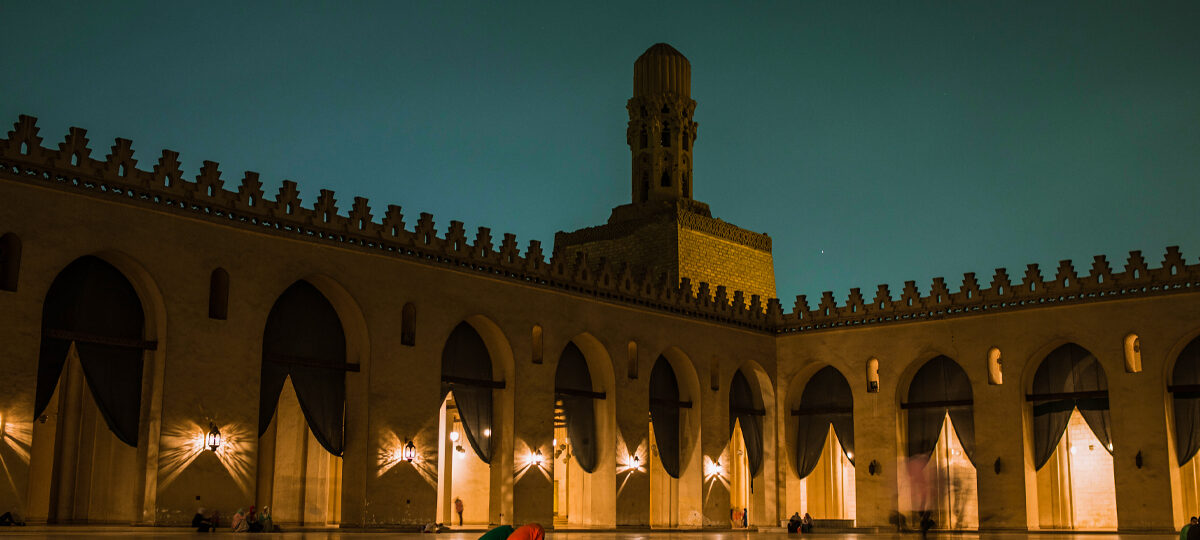Al Azhar Mosque
Even though there are a lot of old mosques to see in Cairo, none of them can compare to the Al-Azhar Mosque in terms of how important it is to Islamic history. It was built by the Fatimids around the year 970 AD as a place to worship and study. Over the years, it has become the most important place for Islamic theology and scholarship in the world.
Students from all over the world come to the Al-Azhar Mosque and the university that shares its name to learn about the history of Islam and the different ways that the Koran can be interpreted. The mosque and the university have been around for almost a thousand years.
Since the beginning, Al-Azhar University has been a place where different ideas can be found. The Ismaili Shi’i Fatimid Dynasty in Egypt started the Al-Azhar University, which later became a Sunni university under later dynasties. But Sunni and Shi’i scholars have worked, taught, and debated together at Al-Azhar for most of its history, even though there are tensions between the two religions. Today, it is seen as a major moderator and regulator of Islamic theology around the world, which has earned it the respect of its peers.
The building of the Al Azhar Mosque was divided into two phases:
Over more than a thousand years, there have been many changes in the political landscape and in who is in charge of the country. As a result, the mosque has been renovated and enlarged several times. The different styles of Al-five Azhar’s minarets show that the city has been ruled by many different dynasties over the years.
The beautiful white marble center court dates back to when the mosque was first built. The building also has a large covered prayer space and two madrassas, or religious schools, on the second and third floors. Students and teachers used to meet in the main courtyard of Azhar University until the school grew and moved its main operations to a second campus in the northern part of the city. Even now, Arabic and Koranic lessons are still taught in the courtyard.
You can also see the city’s three tallest minarets, which were built in 1340, 1469, and 1510 and are the tallest in the world, from the courtyard (from right to left if viewed from the courtyard). The 1510 minaret, which can be recognized by its twin spires, was built by Sultan Al-Ghuri, who also built the nearby Wikala Al-Ghuri and Al-Ghouriyya Complex.
The following are some of the highlights of Islamic Cairo:

Some of the most important places in Islamic Cairo are on Al-Muizz Al-Deen Street. One of these is the Great Mosque of Al-Muizz Al-Deen. When it was first built in the 11th century, this street was the main road through the city, and it was also where mausoleums and palaces were built. The part of the street to the north, between Bab El-Fotouh Street and Al-Azhar Street, has just been fixed up and is now open to tourists. This is one of the most beautiful parts of Cairo, which is why a lot of people like to spend time here. The Qala’un Complex is one of the most beautiful places in the city, and it is in this area.
In Islamic Cairo, which is in the south of the city, you can find some of the most important Islamic buildings in Cairo. Some people think that the Citadel in Cairo is one of the best examples of Islamic architecture. Salah Ad-Din Al Ayyubi, the leader of the Ayyubids, started building the Citadel of Cairo in the 12th century. Inside the walls of the citadel are three important mosques: the Al-Nasir Muhammed Mosque, the Suleyman Pasha Mosque, and the Muhammed Ali Alabaster Mosque.
The Islamic quarter of Cairo has a new park called Azhar Park. In the 1990s, Egyptian officials cleaned up land that had been used as a dump for thousands of years and turned it into a park for the city’s residents. Azhar Park gives a city that doesn’t have many green spaces what it needs: 74 acres of parking area. This beautiful spot has both great views of the city and well-landscaped grounds. Since there is a café and a restaurant in the park, you can always have a good time there.

